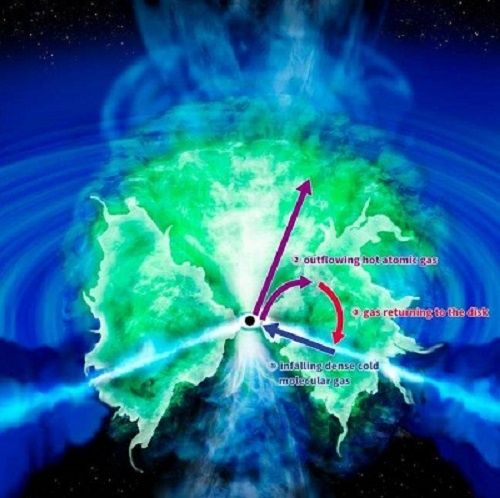New data shows that black holes are actually shaped like water fountains, not doughnuts as scientists previously believed.
RELATED:
Prepare for Meteors, Comets, Stellar Nights in December
A black hole 14 million light-years away in the Circinus Galaxy, gives scientists a brief glimpse into the nature of the astronomical enigma, research published in The Astrophysical Journal stated.
Theoretician Keiichi Wada from Japan’s Kagoshima University said, “Previous theoretical models set prior assumptions of rigid donuts.”
However, using ALMA, Atacama Large Millimeter/submillimeter Array, an astronomical interferometer which combines the power of 66 radio telescopes, researchers believe that black holes are actually composed of three parts which constantly circulates hot atomic gas through the system.

The study shows that a disk of cold gas forms along the rotating plane, gradually heating up and tearing molecules apart. The residue is projected to the outer orbits, circling above and below the black hole before cycling back to create a fountain-like structure.
“Rather than starting from assumptions, our simulation started from the physical equations and showed for the first time that the gas circulation naturally forms a donut. Our simulation can also explain various observational features of the system,” said Wada.
Astronomists also noted an overabundance of an active galactic nucleus or luminous energy within the Circinus Galaxy, produced by the destructive black hole.